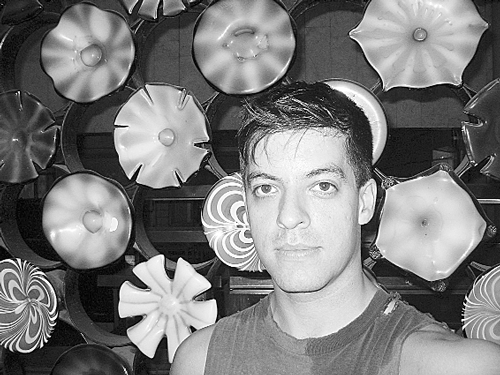Danspace Project brings together young artists in innovative dances
An idol of sorts, Miguel Gutierrez curated an evening of some of the freshest upcoming choreographers of today, all under the tender age of 23. The three themes of the night—not surprisingly—were sexuality, technology and minimalism.
The performance, “Young Americans,” was part of Danspace Project at St. Mark’s Church annual “Food For Thought” drive for neighborhood nutrition programs held January 28.
In the first piece, “part of presence: space,” a young man with long hair, Jon Moniaci, sat down with instruments all around him. He created the music while Chase Granoff, a stumpy-looking young man, danced to Moniaci’s creations. At first Granoff’s movements were Beyoncé-esque, but evolved to choreographed epileptic seizures. As the noise intensified, so did Granoff’s movement. Helicopters and other apocalyptic sounds in the score gave the impression that his convulsions were not involuntary reactions.
The second piece was perhaps the best of the night. In “Precious Little Something,” Daniel Linehan and Michael Helland, dressed in striped shirts and ankle-cropped pants, played two young boys dancing together. This piece was special because it brought the audience into a world that is unfamiliar for some, nostalgic for others. The piece could be seen as the innocent discovery of gay love, experienced through two curious young boys. At first they play, then they run away, and ultimately they find each other. This piece is delightful and funny and is guaranteed to warm your heart.
Pulling the audience into the background life of the dance world in “ELEANOR!,” Eleanor Bauer starts off with a monologue describing life as a choreographer and how everything interconnects—grants, critics, dancers, choreographers, getting others grants, writings reviews, being a dancer… and so on. It’s funny to hear if you aren’t in the dance world. It’s really funny if you know what she’s talking about. She narrates her movements while she dances—this is the sexy part, the part where you look at the person next to you. This different approach to dance is refreshing and comical.
In “Marginal Strip” choreographed by Beth Gill and Dancers, six almost identical women, looking like they came straight out of a Gap commercial, wriggle around on the floor like dying insects. If they are not crawling on top of each other, they are trying to reach the random technological gadgets and extension cords sprawled across the wooden floor with zombie-like desperation. Although the piece basically repeats itself slowly, your eyes will still be glued to every movement these pod people make.
In “19th Century Amusement Park,” Laura Gilbert blends Def Jam Poetry and powerful dance performance. She begins with a poetic monologue about Coney Island and her ideas on life. She exudes feminism and seems to have a good head on her shoulders. Her movements are brisk and packed with emotion. The audience feels a connection because she has introduced herself and by the time she starts to dance, we feel as if we know her.
Finally, in “Scriptura,” dancers Nancy Forshaw-Clapp and Erika Hand and choreographer Isabel Lewis, all wear matching tennis-like outfits, including skirts shorter then their shirts. With their asses in the air and their heads on the ground, it seems as if the choreography focuses solely on legs and rear-ends. The difficulty of the choreography shows through the vulnerability of the dancer’s movements. Chris Lancaster provides accompaniment on cello, and also appears in the performance.
gaycitynews.com


































